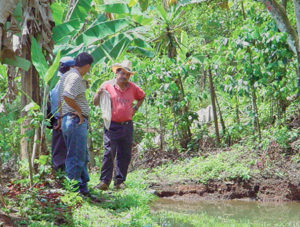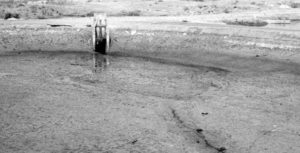
Small-scale tilapia producers find success in Honduras
With a crisis in coffee prices, small-scale tilapia producers in Central America see growing the fish as a lifeline and source of livelihood.
It behooves us to understand land and water use issues and understand the differences between aquaculture and traditional agriculture.

With a crisis in coffee prices, small-scale tilapia producers in Central America see growing the fish as a lifeline and source of livelihood.

Fish culture has a relatively long history in Cameroon. Expanding aquaculture helps alleviate poverty and supply food where fish is the main source of protein.

There is increasing interest in low-salinity shrimp culture in inland areas because it is thought that disease control is easier to implement.

Shrimp and fish farmers frequently apply liming materials to ponds to increase the pH of bottom soils, elevate alkalinity and water hardness and improve conditions for microbial activity and benthic animals.

Natural waters uninfluenced by high biological activity seldom have pH above 8.5, but in fish or shrimp culture, pond pH levels can rise to 9 or higher.

Low-salinity shrimp culture is an important activity in Thailand. Ponds contain water of 2 to 5 ppt salinity, mixing brine solution from coastal seawater with freshwater.

Denitrification by anaerobic bacteria can remove nitrates from RAS, but the operation requires anaerobic conditions and the addition of carbon sources.

Study evaluates nitrification rates of three fluidized-bed filters, finding no significant changes in fluidization level as biofilm accumulated or was sheared off.

Where aquaculture is key to food or employment, policies regarding effluent management should be flexible to address various species, systems and environments.

The ionic composition of inland well water can vary from suitable to toxic to cultured animals. Reliable data on concentrations of major cations (calcium, magnesium, potassium, and sodium) and major anions (bicarbonate, sulfate, and chloride) is therefore important in the management of waters for inland shrimp farming.

Water's ability to conduct electricity increases with the total concentration of dissolved ions. Measuring conductivity helps estimate salt content of water.

Partitioned aquaculture system for catfish and co-culture of tilapia can achieve catfish yields up to four times higher than conventional pond culture.

With increasing intensification of pond aquaculture, management of sediment like organic matter is becoming an important concern for pond managers.

Integrated aquaculture systems comprise large fish cultured intensively in cages and small fish cultured semi-intensively in the surrounding pond water.

Research in a culture system without water exchange indicated that biological performance of postlarvae was similar.